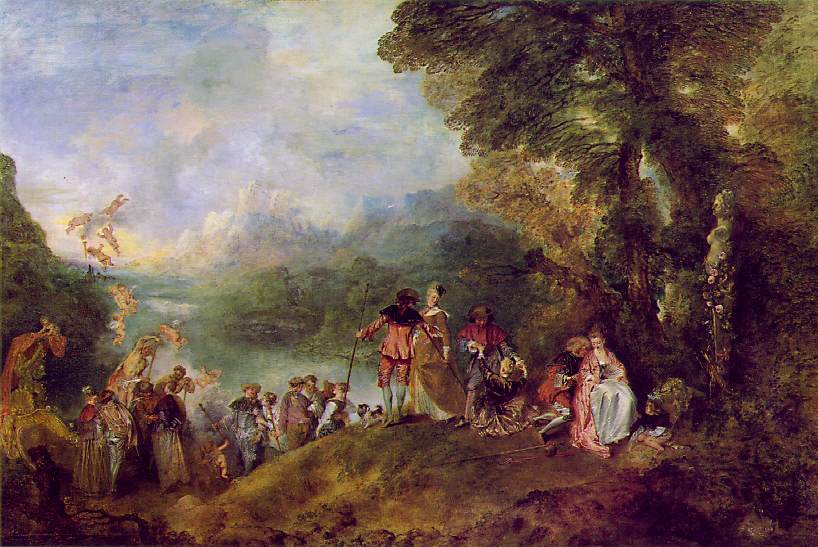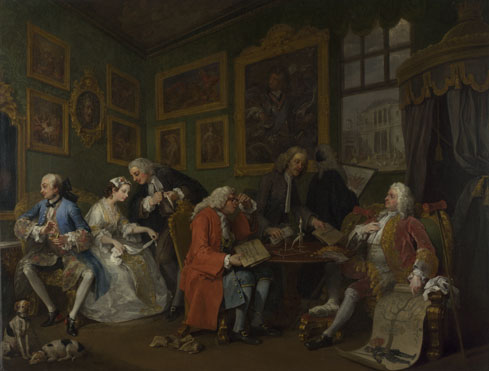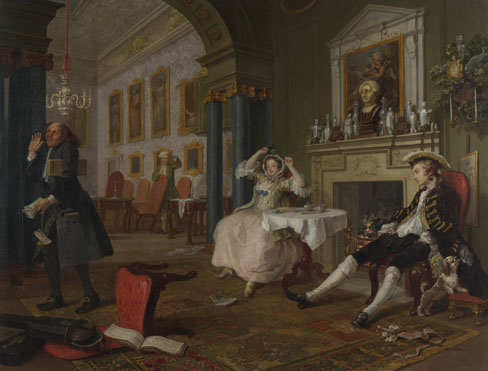Until now, art has been relatively easy to classify and conceptualize. Each era has specific attributes, and one (who is familiar enough with the arts) can tell from a glance approximately when a work was produced and label it according to its respective time period. Enter the Romantic Era. This period of time is host to the diversification of styles and the development of many new techniques. There is not one sole face from which to judge the Romantic Era, and one is invited to delve deeper into the slew of art during the early Industrial Age. This movement peaked widely from the start of the 1800s to the 1850s and was largely a reaction against the Age of Enlightenment and the scientific compartmentalization and rationalization of nature. It would seem that despite the great advancements made in the comprehension and perspective of interpreting our natural world, people much preferred the air of mystery and abstruseness of nature.
During the early part of the Romantic movement, we see the emergence of Romanticism- I guess because it was the first stage, its label won the title of the era. This was a time, not necessarily filled with romance, but with idealism, majesty, and a high value of aesthetics. Such works as William Turner's "The Fighting Temeraire tugged to her last berth to be broken up" (below) and Caspar David Friedrich's "Wanderer above the Sea of Fog" (below below) are exemplary of the idealistic and reverent view of nature during that time.
 |
| "The Fighting Temeraire tugged to her last berth to be broken up" William Turner, England, 1838 |
 |
| "Wanderer above the Sea of Fog" Caspar David Friedrich, Germany, 1818 |
What especially appeals to me are the uses of color which accurately reflect the beauty of nature, and also the air of movement that each piece has. Many of the pieces we have seen so far on this blog have a bit of a static feeling to them, but these incline one to feel as if one is standing on the shore, or on the rocks, feeling the world swirl by. I think that is one element that brought so much success to these paintings, the fact that they transport the onlooker into the subject material so well.
The Romantic style gradually gave way to the Hudson River School of art- exemplary of the emerging style of Realism that was a reaction to the Romantic style. For those who just couldn't see through the rose colored lenses I suppose, this style strove to depict nature as accurately as possible (plus a little supernatural lighting) and inspire in the public the awe of God's creation. My favorite example is Bierstadt's "Among the Sierra Nevada Mountains, California". I literally gaped when I saw it. If I could, I would jump into this painting and go make my homestead, to live forever after in paradise with the majestic elk and the luminous mountains of glory!
 |
| "Among the Sierra Nevada Mountains, California" Albert Bierstadt, 1868 |
Now, hold on to your seats- it's about to get crazy. Or at least as crazy as it gets in the 1800's. Along comes Impressionism. At first it seemed to be the bastard child of the Romantic Era- it was disliked and unappreciated, however over time that changed, and people began to grok the value it held.
Enter Monet- one of my all time favorite artists. He perfected this radical new style of painting and did so with exceptional flair. The vision it must have taken to create the effects of a face from afar when up close all one can see are blurred strokes is pure genius.
 |
| "Woman with a Parasol and her Son" (Enlarged) Claude Monet, France,1875 |
 |
| "Woman with a Parasol and her Son" Claude Monet, France,1875 |
With the passage of time, Monet began to draw more and more inspiration from his garden at his home- Giverny. "The last 30 years of Monet's life were dominated by his water lilies of which he painted about 250 oil paintings. Some of the Water Lilies paintings were small, while some were large enough to take up an entire wall." (1)
He found the beauty of his lily pond so captivating, that he no longer searched for any other subjects- he just painted the lilies in his pond, for each day they were different, lit differently, blooming differently, reflected differently, fading as summer turned to autumn. he found his true passion in capturing those transient moments of nature. He painted outdoors mainly, which was a very new development in the art world. For many years, the paints themselves were of an unstable and difficult to preserve nature, thus making outdoor painting very hard. With the development of better paints and new ways to store them (i.e. tubes), the freedom of the artist grew.
"The paint tube was invented in 1841 by portrait painter John Goffe Rand, superseding pig bladders and glass syringes as the primary tool of paint transport. Artists, or their assistants,
previously ground each pigment by hand, carefully mixing the binding oil
in the proper proportions. Paints could now be produced in bulk and
sold in tin tubes with a cap. The cap could be screwed back on and the
paints preserved for future use, providing flexibility and efficiency to
painting outdoors. The manufactured paints had a balanced consistency
that the artist could thin with oil, turpentine, or other mediums.
Paint in tubes also changed the way some artists approached painting. The artist Pierre-Auguste Renoir said, “Without tubes of paint, there would have been no Impressionism.” For the Impressionists, tubed paints offered an easily accessible variety of colors for their plein air palettes, motivating them to make spontaneous color choices. With
greater quantities of preserved paint, they were able to apply paint
more thickly."(2)
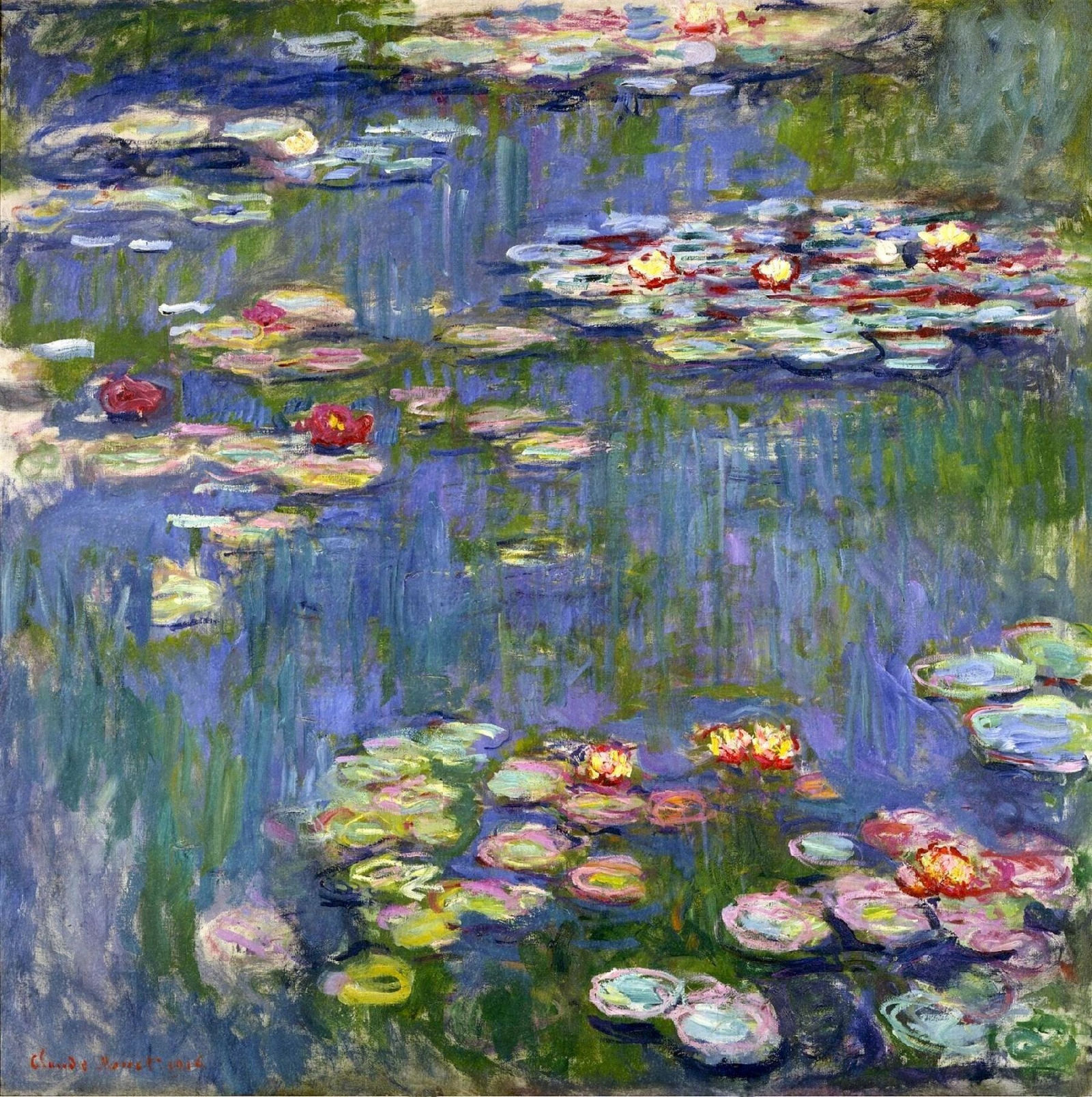 |
| "Water Lilies" Claude Monet, Giverny, France,1916 |
So, having seen only examples of Monet, one cannot yet decide if one likes or dislikes Impressionism. Let us turn to Renoir to help round out the style.
 |
| "Mlle Irene Cahen D'Anvers" Pierre Auguste Renoir, France, 1880 |
In keeping with the Impressionist style, Renoir uses many halting brushstrokes to create his magnificent visages. One can see the fluidity of the image, even in the above portrait. His use of light is exquisite, and the subtle movement that he suggests in these selections is wondrous. So determined was he, that even as he ailed, he continued to paint. "Around 1892, Renoir developed rheumatoid arthritis. In 1907, he moved to
the warmer climate of "Les Collettes," a farm at Cagnes-sur-Mer, close
to the Mediterranean coast. Renoir painted during the last twenty years
of his life, even when arthritis severely limited his movement, and he
was wheelchair-bound. He developed progressive deformities in his hands
and ankylosis of his right shoulder, requiring him to adapt his painting
technique. In the advanced stages of his arthritis, he painted by
having a brush strapped to his paralyzed fingers."(3)
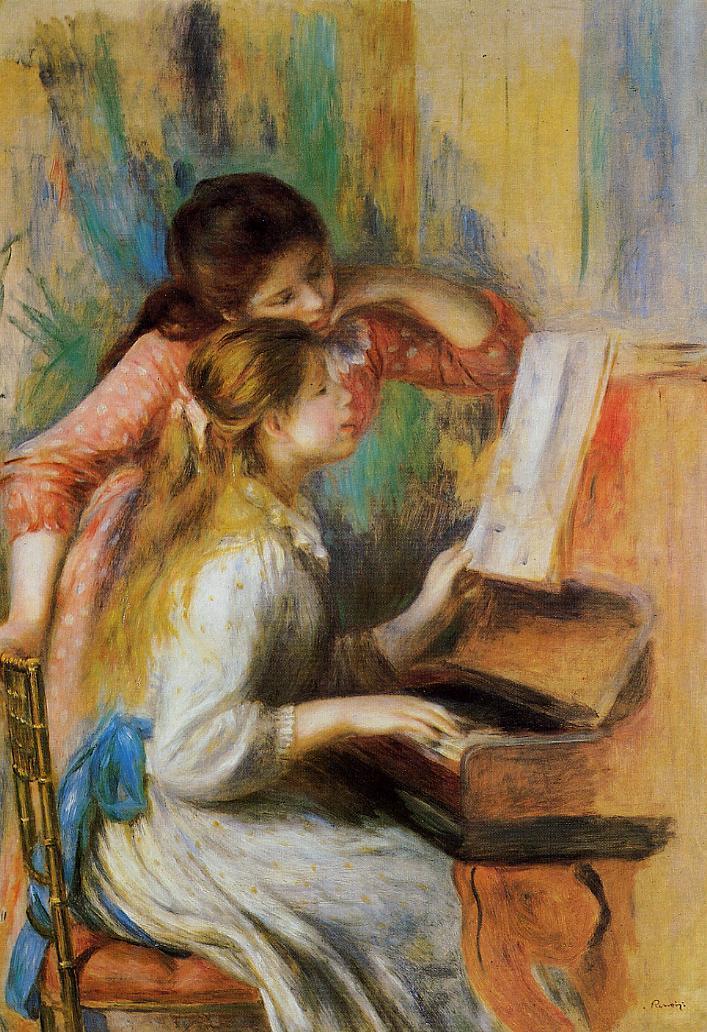 |
| "Girls at the Piano 1" Renoir, France, 1892 |
Lastly, in order to form a moderately educated opinion of Impressionism, we shall examine the work of Berthe Morisot, the first female to join the circle of French Impressionist painters. It was not easy for her, and despite protest from her family and friends, she strove to achieve recognition both for herself and her art form.
 |
| "Berthe Marisot with a Bouquet of Violets" Portrait by fellow impressionist Edouard Manet,1872 |
Shown above is a portrait of Marisot as painted by Edouard Manet, her brother-in-law. "She was acquainted with Edouard Manet from 1868, and in 1874 she married Eugene Manet, Edouard's younger brother." After his passing, "...Morisot became
acquainted with Édouard Manet. He took a special interest in Morisot, as
is evident from his warm portrayal of her in several paintings. One
includes a striking portrait study of Morisot in a black veil, while in
mourning for her father's death.Correspondence between them bespeaks
affection. He once gave her an easel as a Christmas present. He also
interfered in one of her Salon submissions when he was engaged to
transport it. Manet mistook one of Morisot's simple self-criticisms, as
an invitation to add his corrections, which he did, much to Morisot's
dismay." (4)
I'd be pissed too if someone took liberties with my art.
Her paintings show the classic Impressionist brushstrokes, but with perhaps a little more refinement. The portrait of her daughter, Julie, seems to be a bit more detailed than other Impressionist portraits, imparting a defined sense of melancholy and listlessness.
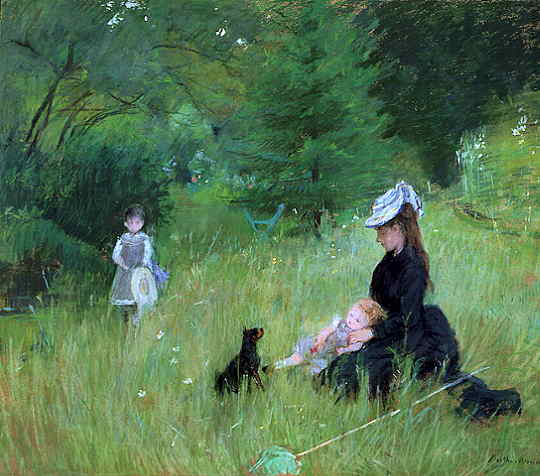 |
| "On the Grass" Berthe Morisot, France,1874 |
One of her favorite subjects was of course, her daughter, Julie. Her love and admiration for her daughter is well represented in the paintings- a testament to their bond.
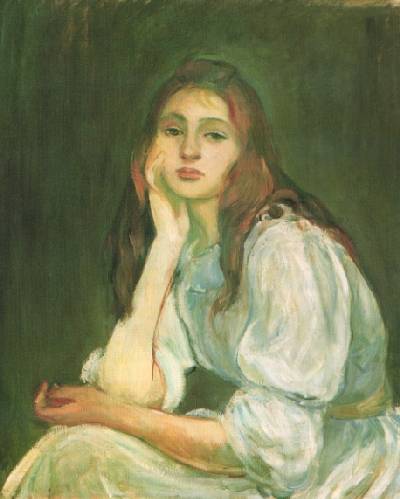 |
| "Julie Daydreaming" Berthe Morisot, France,1894 |
Morisot's
efforts, along with Monet, and Renoir's to name a couple, paid off in
gaining the Impressionist style recognition and appreciation, even if it
was not immediate.
I for one, am an avid fan of Impressionism. Its fluidity, deftness, and transient beauty capture my sense of artistic admiration and undoubtedly that of many others. It paved the way for so many new ways of thinking about art, that had it not come to be, we would most likely still be stuck with Neoclassical art!
(1) "Monet Gallery." Water Lilies, Monet's Water Lilies Painting, Nympheas. Web. 26 Oct. 2014.
(2) Wikipedia. Wikimedia Foundation. Web. 26 Oct. 2014.
(3) "Pierre Auguste Renoir Biography." Pierre Auguste Renoir Biography. Web. 26 Oct. 2014.
(4) "Berthe Morisot - French Impressionist Painter - Biography, Quotations & Art - The Art History Archive." Berthe Morisot - French Impressionist Painter - Biography, Quotations & Art - The Art History Archive. Web. 26 Oct. 2014.
